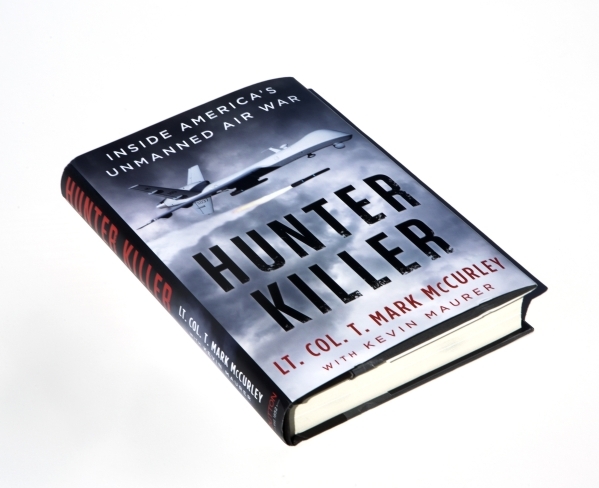Book: ‘Politics’ thwarted 2004 chance to kill Osama bin Laden


A Predator spy plane crew from Nevada believed they had found Osama bin Laden leaving a cave in eastern Afghanistan seven years before Navy SEALs killed him in Pakistan in 2011.
But hopes of the 17th Reconnaissance Squadron crew to annihilate the terrorist leader with a Hellfire missile strike in 2004 were dashed by “politics,” a former Creech Air Force Base pilot wrote in a book with co-author Kevin Maurer that a New York publisher released Monday.
“Why’d they call it off?” the pilot, retired Air Force Lt. Col. T. Mark McCurley, asks the mission commander, Carly, who is identified by her first name only in the book, “Hunter Killer — Inside America’s Unmanned Air War,” published by Dutton, of Penguin Random House LLC.
“Politics. Management between us and the boss called it off,” said Carly, without naming names.
McCurley later asks if the taller man with a walking stick and flanked by three guards with AK-47s was him because “I had to know if I’d actually found Bin Laden.”
“We think it was him,” Carly said.
In a telephone interview Monday, McCurley explained that the reference to “politics” was about rules of engagement.
“We had to make sure we hit the right target and minimize collateral damage. Unfortunately that was likely the aspect that shut us down,” he said. “There wasn’t enough time to ensure that was the right target.”
Nevertheless, “The analyst that I worked with was convinced that we had found him,” he said.
From his perspective, last week’s incidents when Russian fighter jets entered airspace used by unmanned U.S. Predators and Reapers in the Middle East makes for a complicated, dicey situation because “They are not working toward each other’s goals.”
He said shooting down a Predator won’t kill anybody but “it may start a war. That is one very extreme example. What’s to stop the next shot being an A-10? It can quickly escalate.
“It can quickly spiral out of control and that’s a very sticky subject Central Command has to address,” he said.
McCurley, 45, who goes by the call sign, “Squirrel,” lived in Las Vegas from 2003 to 2008 while he flew remotely piloted Predator aircraft, often referred to as drones, for the 17th and 15th reconnaissance squadrons. The squadrons were located at Nellis Air Force Base before they were transferred in late 2005 to the Creech base at Indian Springs, 45 miles northwest of Las Vegas.
For national security reasons, he was not authorized to say where the ground stations were located where he controlled the Predators for that mission. They can be flown via satellite link in theater or from thousands of miles away at ground stations in Nevada and elsewhere in the United States.
The book is a first-person account of how the Air Force’s remotely piloted aircraft program evolved from “an aviation backwater joke to the tip of the spear in the war against terrorism.”
He volunteered to switch from the cockpit of manned planes to pursue a career in the remotely piloted aircraft program where he could help fight the war on terrorism. Like other RPA pilots, he downplays use of the word “drones” because, as he says in the book, the aircraft don’t fly by themselves. “We were in control of everything including the weapons.”
He became commander of the squadron credited with hunting and killing American-born terrorist Anwar al-Awlaki, and he also triggered the airstrike that killed “the Facilitator,” a terrorist attack planner and bomb maker, who he had tracked for months.
“That shot really shows how intimate we are with targets,” McCurley said Monday. “People think we’re 8,000 miles away and far removed. That’s not the case. We watch the war up close. …When you do have to pull that trigger, it’s personal. Ultimately that does weigh on you. Even though it’s a necessity you still have to process that at some point.”
Contact Keith Rogers at krogers@reviewjournal.com or 702-383-0308. Find him on Twitter: @KeithRogers2












